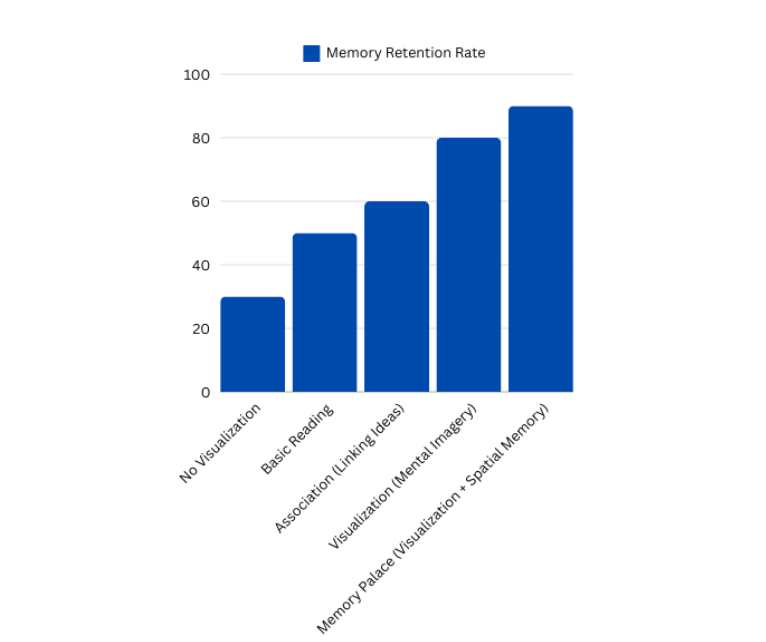Speed learning: The best hack to Memorise answers fast




Memorizing answers quickly and effectively is crucial for students, professionals, and anyone looking to retain information for exams, presentations, or learning new skills. The ability to absorb and recall information at lightning speed can be the difference between success and stress. But how exactly can you memorize answers fast and, more importantly, perfectly?
In this blog, we’ll explore the best speed-learning techniques and hacks to memorize answers quickly, in as little as 5 minutes., which will help you master both short and long answers with ease. Whether you're struggling with memorizing lengthy responses for an exam or trying to recall key facts for a presentation, these strategies will supercharge your memorization process.
Before diving into memorization, take the time to understand the concept behind the answer. When you truly grasp the material, it becomes easier to remember, as your brain can relate the new information to something you already know.
When you have a solid understanding, memorizing becomes a natural next step.
Memorizing long answers can feel like an insurmountable task. However, chunking involves dividing the content into smaller, more digestible parts, making it easier to learn and recall.
This technique works wonders for short and long answers, ensuring you remember the details without feeling overwhelmed.
Visualization is a powerful technique for memorization. It involves forming mental images of the information you need to remember. A great method for this is the Memory Palace technique.
Visualization makes the memorization process more engaging, and the stronger the images, the easier it is to recall the information.

Mnemonics are tools that make remembering easier by associating new information with simple words, acronyms, or rhymes.
Mnemonics are particularly helpful for memorizing a process's lists, formulas, or steps.
Simply reviewing material once isn’t enough to retain it long-term. Spaced repetition involves revisiting the material at increasing intervals to reinforce memory retention.
Spaced repetition is scientifically proven to increase memory retention over time, making it one of the most effective memorization strategies.
The study by Cepeda et al. (2006), titled “Spaced Repetition Promotes Efficient and Effective Learning: The Benefits of Distributed Practice”, demonstrated that spaced repetition significantly enhances long-term retention compared to massed practice (cramming). The study found that their retention rates were much higher over time when participants learned material at increasing intervals. For instance, after one day, participants who used spaced repetition had an 80% retention rate, while those who studied in a single session (massed practice) only retained 40%. After one week, the retention rate for the spaced repetition group was 75%, while the massed practice group dropped to 25%. Spaced repetition learners retained 65% of the material even after a month, compared to just 5% for those who crammed. This study confirms that spacing out learning sessions helps combat the forgetting curve, reinforcing memories and improving long-term recall. Tools like Anki and Quizlet, which use spaced repetition algorithms, can be particularly effective for improving retention and learning efficiency.
One of the best ways to memorize answers quickly is to teach the material to someone else. When you explain a concept, it forces you to process the information at a deeper level.
Teaching others helps reinforce your knowledge and identify gaps in your understanding.

Active recall entails recovering knowledge from memory without consulting your notes. This approach improves memory retention by activating the brain.
Active recall forces you to actively retrieve information, strengthening your ability to remember it long-term.
The best memorization techniques are useless if you’re constantly distracted. Focus is a key factor in speed learning.
Create a Study Environment: Find a peaceful, comfortable study area where you can fully concentrate.
Use the Pomodoro Technique: study for 25 minutes, followed by a 5-minute break. Repeat this cycle to keep your mind active and engaged.
Reducing distractions and staying focused allows your brain to acquire and remember more information during study periods.
Mastering the art of speed learning is possible with the right strategies. Whether you're trying to memorize long answers for an exam or simply want to learn answers fast and perfectly, techniques like chunking, visualization, spaced repetition, and active recall can help you memorize faster and retain information longer. By incorporating these hacks into your study routine, you'll be able to easily learn and recall answers, whether short, long, or complex.
Remember that the key to mastering any subject is understanding and engaging with the material, not just memorizing it. So, try out these tactics, and you'll soon discover that learning answers is second nature.